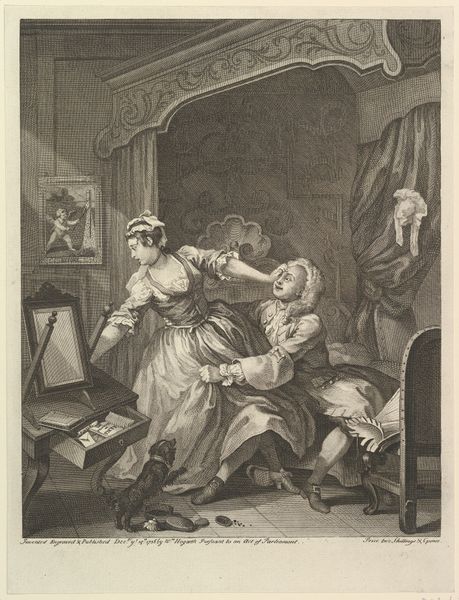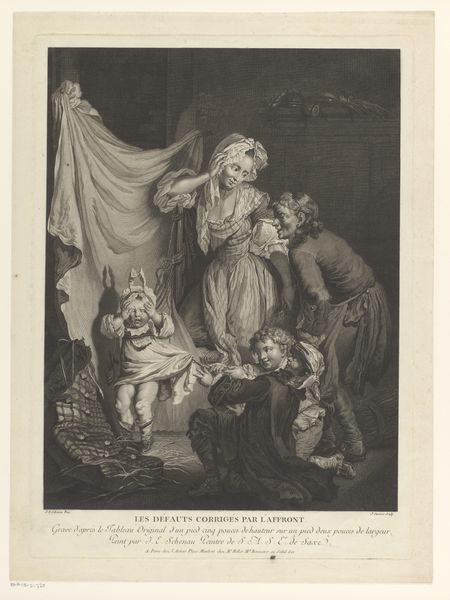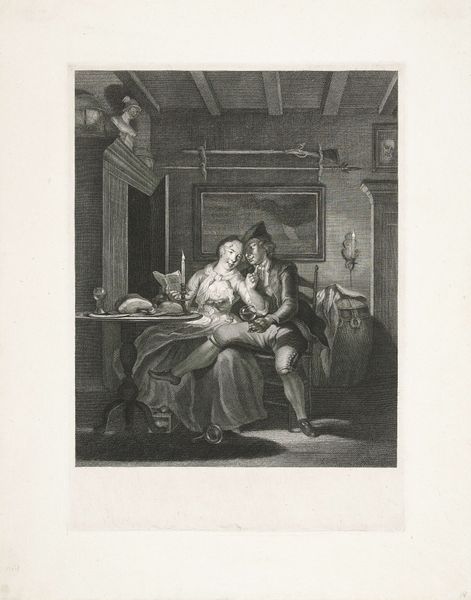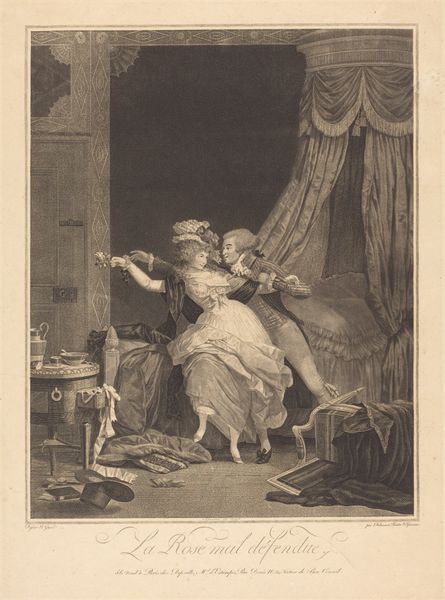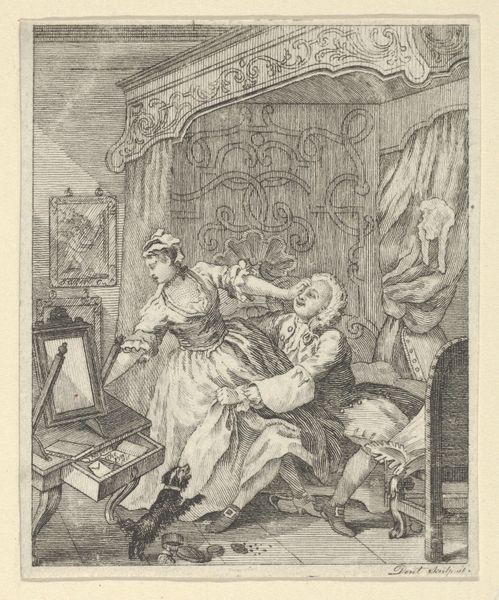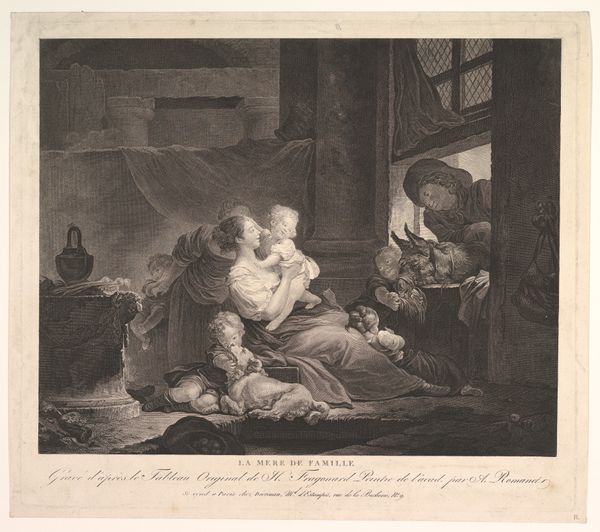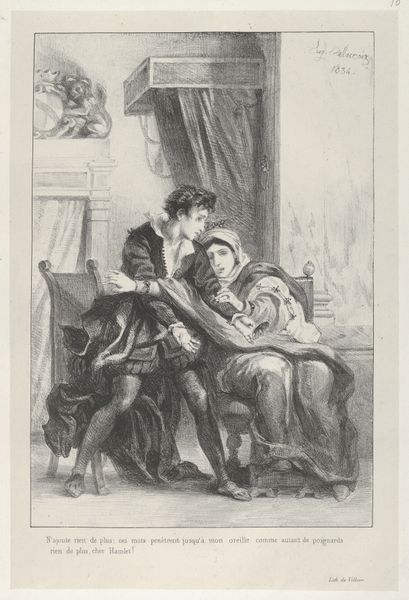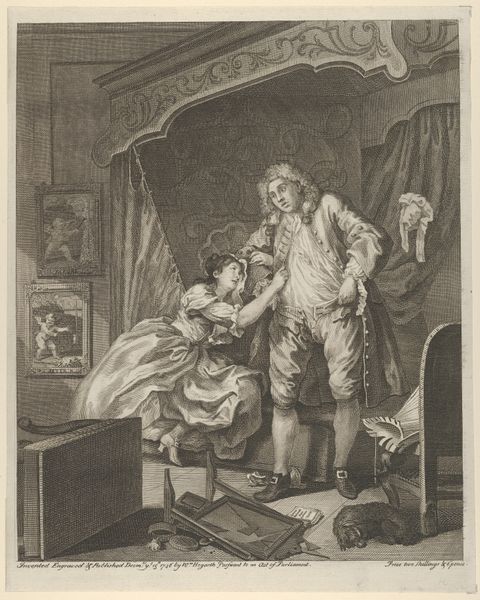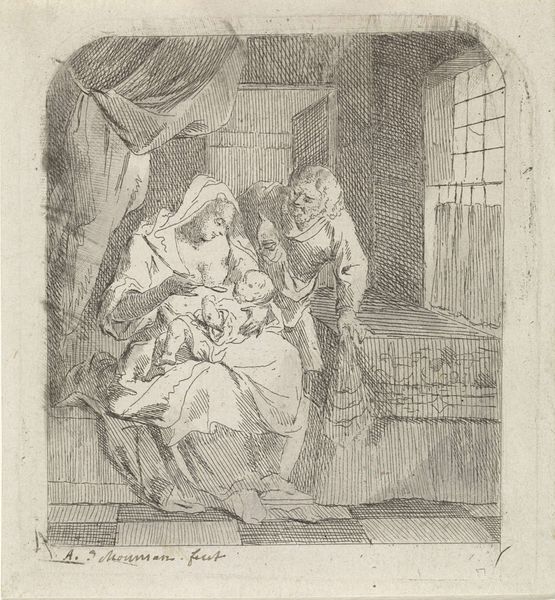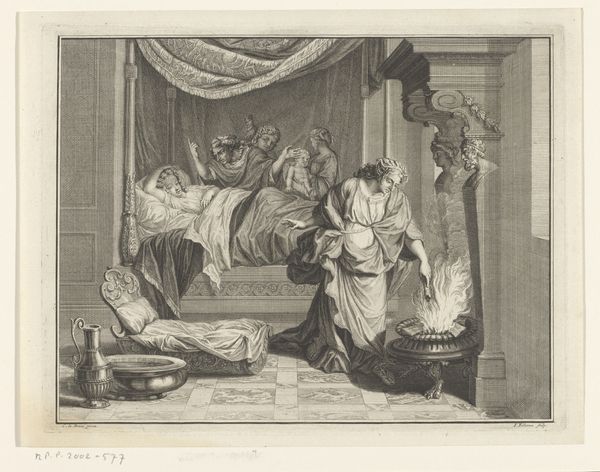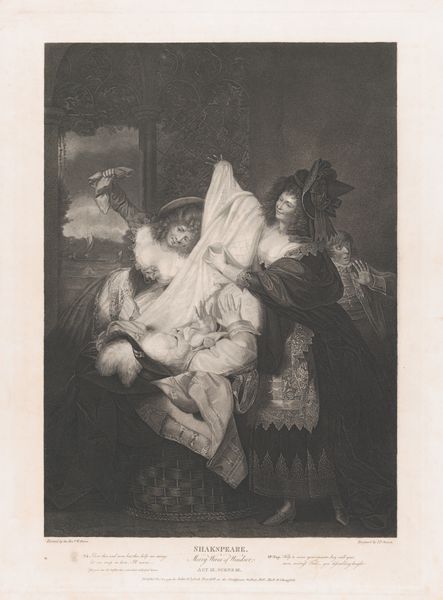
drawing, print, engraving
#
drawing
#
baroque
# print
#
figuration
#
genre-painting
#
history-painting
#
engraving
Dimensions: Sheet: 19 1/8 x 13 1/4 in. (48.5 x 33.6 cm)
Copyright: Public Domain
Curator: The shadows dancing on the wall… the soft light illuminating the central figure. The composition of this print immediately captivates. Editor: Indeed. And when we consider its title, "Origin of Painting," and that it was produced sometime between 1620 and 1670, it becomes evident that we are exploring a moment in art history that attempts to define itself by looking to, or even inventing, a past that justifies current social structures. Curator: I'm struck by the technique itself – the crispness of the engraving that allows for such detail. Note the careful rendering of the fabrics, the play of light on the skin. These formal elements elevate what might otherwise be a simple genre scene. Editor: It's also essential to acknowledge what the artwork does *not* immediately show. Where are its social and economic conditions, the structures of patriarchy, nobility, and classism it upholds and celebrates? To what extent is this “origin story” serving to erase those marginalized during its making? Curator: The very act of portraying silhouette-making itself as an act of high art—what does that mean for other forms of craftwork typically considered the provenance of women in the domestic sphere? Editor: The artist is Jean Ouvrier, so this is a white male artist taking control of a popular trend for the upper class and putting his stamp of approval on it. What makes this endeavor “art”? Whom does this artwork honor? It appears it is dedicated to Monseigneur the Prince Palann des Deux Ponts, and to “son e Altesse Serenissime.” Curator: And what does it suggest about representation and identity at the time? I think, given that silhouettes can stand in for someone, it could represent that individuals of note at the time were willing to give up a level of representation for one they could control themselves. Editor: Or that having portraits of notable individuals allowed the nobility to show off the “scalps,” in a way, that is a collection of images of subjects under their power and gaze. Curator: These insights invite us to further decode the layers of meaning embedded in it. Thank you. Editor: And thank you; this work pushes us to consider these layers with urgency.
Comments
No comments
Be the first to comment and join the conversation on the ultimate creative platform.
